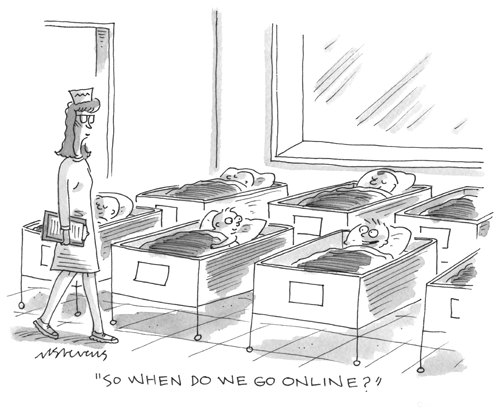|
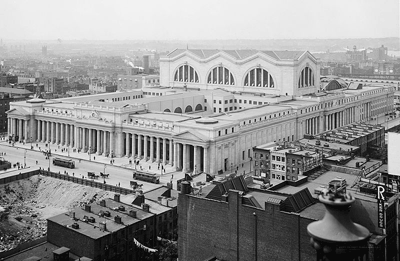 There
is a celebration this week in New York City. The nearly three quarters
of a million people that are mostly commuters going to and from work in
New York & New Jersey have been forced to travel pre-pandemic through
Pennsylvania (Penn) Station in Manhattan, a daily subterranean dismal
railroad encounter since the misdirected destruction in 1963 of the monumental
Beaux Arts 1910 version of Penn Station (right). These commuters will
get some relief beginning later this week when a new passenger experience
begins on January 1. There
is a celebration this week in New York City. The nearly three quarters
of a million people that are mostly commuters going to and from work in
New York & New Jersey have been forced to travel pre-pandemic through
Pennsylvania (Penn) Station in Manhattan, a daily subterranean dismal
railroad encounter since the misdirected destruction in 1963 of the monumental
Beaux Arts 1910 version of Penn Station (right). These commuters will
get some relief beginning later this week when a new passenger experience
begins on January 1.
A Tale of Two Buildings
Just across the street from Madison Square
Garden that today sits on top of what was Penn Station is a second equivalent
to Penn Station building (pictured) that opened in 1921 and was designed
by McKim, Mead & White, in fact the same architects that created the
original building. Both masterpieces of construction and imagination complemented
each other having been inspired by the Baths of Caracalla in Rome.
The surviving building was and has been
in use since it was created as the Main General Post Office (GPO) for
New York City and is named in honor of James Farley, who served as Postmaster
General during President Franklin D. Roosevelt’s administration.
Airlines Went Postal
at Takeoff
But, thanks in large part to the late, great
Senator Patrick W. Moynihan, the story really gets interesting and connects
all of us in the airline business.
During the early days of aviation as the
airlines were being formed and even before they carried passengers, every
airline that was founded during the startup years of the early 20th century
had one solid revenue base: they all carried mail and express.
Kelly Air Mail Act of 1925
The USA Kelly Air Mail act of 1925 paid
fledgling airlines to carry mail—$3.00 a pound for the first 1,000
miles . . . and the airlines were born. The Kelly Act
was about putting mail and parcel carriage up for bids, taking air mail
control away from the Post Office preferring private enterprise.
But USPS did command some vital terms of
contracts, including which airports were to be used; that is where our
new Penn Station Building that used to be the New York City GPO steps
into the picture.
Fastest from Airport
to Post Office
The edict in the mid 1920s was that the
contract to carry and deliver the mails was given to the carriers that
could deliver fastest to the GPO located as mentioned across the street
from Penn Station.
The early winner in airport location was
Newark Airport that began as little more than a farmer’s field in
New Brunswick nearby the City of Newark, New Jersey. But City of Newark
and New Jersey politicians, especially Mayor Meyer Ellenstein were very
fast on their feet recognizing aviation and were firmly onboard with money
to support the aviation business.
Based on carrying mails and building what
at the time during the 1920s were amongst the greatest airport facilities
in the world with early Unit Terminals for Eastern Airlines, United and
others, Newark Airport served in fact as the world’s busiest airport
from the day it opened formally in its present location in 1928 until
December 2, 1939, the day LaGuardia Airport opened in Flushing (Queens),
New York.
Expressway from Newark
to Penn GPO
Since success with the airlines was dependent
on being fastest to the Manhattan GPO, no doubt Newark Airport benefitted
greatly from the opening of the Holland Tunnel (1927) to New Jersey in
lower Manhattan and also from building an elevated Pulaski Skyway (1930)
above the many canals, rivers and railroad crossings that dot the landscape
from Newark to Elizabeth, where the Holland Tunnel connects New Jersey
with lower Manhattan.
Once in Manhattan, the ride to the GPO was
achieved in minutes, in fact the entire journey took less than 40 minutes
from airport to GPO.
Brooklyn Landing Trip
Took Hour
At the time New York City’s only airport
was Floyd Bennet Field located about a mile from where JFK Airport is
today.
So as aviation dawned and U.S. Postal mail
subsidies paved the runways for fledgling carriers to form and bid for
contracts, a mail van could drive from rampside Newark Airport to the
GPO faster and with much less delay and commotion than a similar journey
from Floyd Bennett Field.
Floyd Bennett, named for a WW I aviator,
is located (and still today) at the foot of Flatbush Avenue so every mail
delivery trip in the 1930s, even with an armed escort and sirens blaring,
had to navigate past several miles of trolley cars, horses and carts,
street vendors and shopping districts just to get to The Brooklyn Bridge.
Once across the BB, the mails then had to navigate all the way across
Manhattan’s West Side through cross-town traffic to the GPO. On
a good day the trip took over an hour.
Ticket Reads New York
So Take Me There
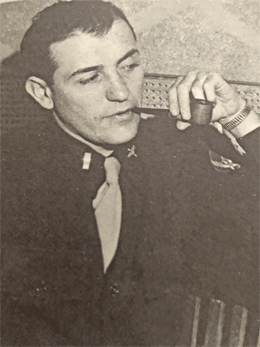 Repeatedly
New York City tried to wrest the mail contracts away from Newark and finally
in a major publicity gag, Mayor LaGuardia, insisted upon arrival at Newark
one night in 1932: “My ticket says New York, and I want you to take
me there.” Repeatedly
New York City tried to wrest the mail contracts away from Newark and finally
in a major publicity gag, Mayor LaGuardia, insisted upon arrival at Newark
one night in 1932: “My ticket says New York, and I want you to take
me there.”
My friend, the late E. B. "Mannie"
Berlinrut, who was the only reporter when TWA had booked the Mayor’s
flight with the ticket reading: “Chicago to New York (Newark)”,
obligingly granted the Mayor’s wish and flew Hizzoner to Floyd Bennett.
“After the flight that I covered for
The Newark Evening Call newspaper,” Mannie told me, “I
flew back alone aboard that tiny DC-2 and saw the lights of New York City
coming up and knew that would not be the last time Newark would hear from
New York about aviation.”
Well, they did and he did, and as mentioned
earlier, LaGuardia Airport opened for business December 2, 1939.
Airlines Went to LaGuardia
 Newark
Airport was washed up, the airlines departed in droves as EWR shut down
like a light switch, and in fact remained that way in the backwater of
New York/New Jersey aviation for more that 35 years, until the aggressive
management of the New York & New Jersey Airports under people like
Port Authority Director of Aviation Robert J. Aaronson and others finally
turned that situation around in the 1980s. Newark
Airport was washed up, the airlines departed in droves as EWR shut down
like a light switch, and in fact remained that way in the backwater of
New York/New Jersey aviation for more that 35 years, until the aggressive
management of the New York & New Jersey Airports under people like
Port Authority Director of Aviation Robert J. Aaronson and others finally
turned that situation around in the 1980s.
But for Newark it was great while it lasted
and carrying mail to Manhattan with that postal subsidy lasted long enough
for the passenger business to take hold and the rest, as it is said, is
history.
Fast Forward to Today
Today Floyd Bennet Field is part of the
U.S. Park Service.
In 2021 a great portion of the heyday airport
that used to be at Newark still exists, including an exquisite building
created in 1934 that housed the world’s first Air Traffic Control
Center.
I wrote a book to try and save that building
in 1978, when Newark Airport was using it as a flight kitchen, a postal
facility and a weather station. Great Airports, Newark 1928-1978
brought the rich history of New Jersey aviation to the fore.
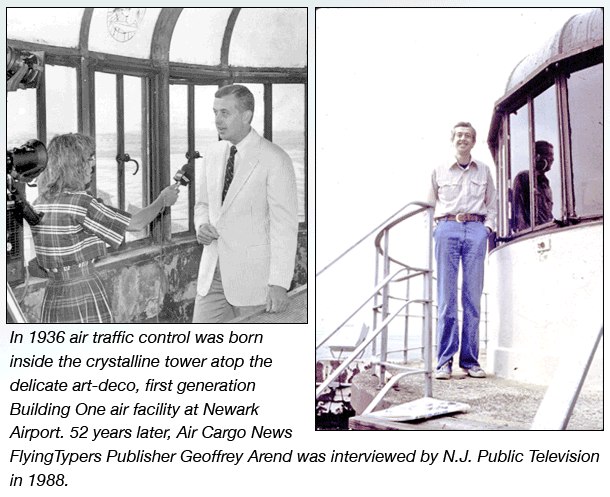 |
The Unsung Hero
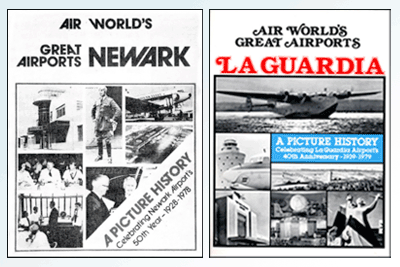 Port
Authority Aviation Director Bob Aaronson, mentioned here earlier, took
action during the early 1980s to not allow planners to further alter or
even perhaps knock the building down because it sat at the end of one
of the airport’s main runways. Port
Authority Aviation Director Bob Aaronson, mentioned here earlier, took
action during the early 1980s to not allow planners to further alter or
even perhaps knock the building down because it sat at the end of one
of the airport’s main runways.
Quietly, with great skill and determination
Mr. Aaronson granted the place a reprieve until funds were finally secured
to save the building and move it elsewhere on the airport, where it serves
as the airport managers’ office today.
And here lies another twist connected to
our story of Penn Station.
Our book on Newark got the ball rolling
to save Building One at Newark Airport.
Later our book Great Airports LaGuardia
actually saved The Marine Air Terminal, the home of the overseas flights
for New York City until Idlewild Airport (JFK International), opened in
1948.
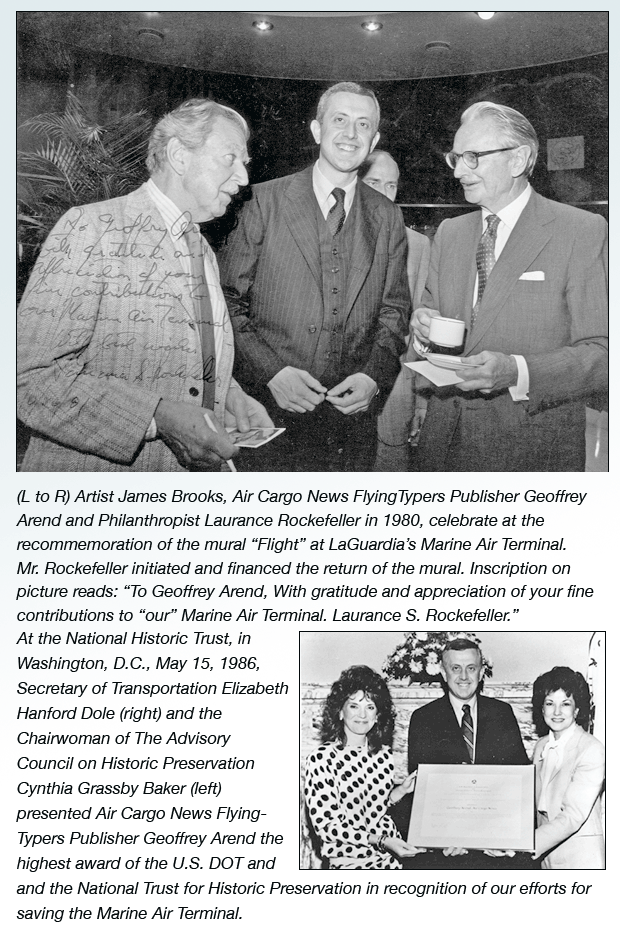 |
We were recognized and honored with the
highest award of the U.S. Department of Transportation, FAA and The National
Historic Trust, for “Outstanding Contribution to Aviation History
& Preservation” in a Washington ceremony in 1986. The connection
to these activities of course was the destruction of the aforementioned
giant Penn Station that impacted everyone, big and small, who loves New
York.
Losing Penn Station made everyone keenly
aware of the need to protect our heritage for future generations. So,
the rebirth of the great first generation passenger stations at airports
here and everywhere else in the U.S. came in one manner or form from the
uproar over the loss Penn Station, one of the greatest U.S. train stations
of all time.
Makes the coronation this week of what’s
left that can be called Penn Station in Manhattan very sweet indeed. When
we can all go out and travel and live again, if you ever find yourself
in the Newark Airport air cargo area, and have a minute, go find Building
One, you will not be disappointed.
At LaGuardia where $8 billion USD is spent
to rebuild the entire airport, the only building that cannot be touched
is the Marine Air Terminal. That jewel of a place, where we had our offices
and shepherded the MAT preservation effort for 25 years, is still there
and is home to the mammoth mural “Flight” created by James
Brooks. When one comes to New York, this is a place not to be missed.
So as of January 1, 2021 ‘The Moynihan
Train Hall’, where the airmail made the airlines, will open the
skies for train riders as part of the new Penn Station featuring expansive
92-foot-high skylights.
Somewhere in that beautiful revitalized
255,000 square foot reimagined space for travelers in Manhattan, where
commercial aviation spent many of its most formative years, today –
across the decades – moves us still.
Geoffrey
|



